In which we grab hold of American soccer’s third rail and don’t let go until we resolve this thing once and for all (or go up in flames trying)
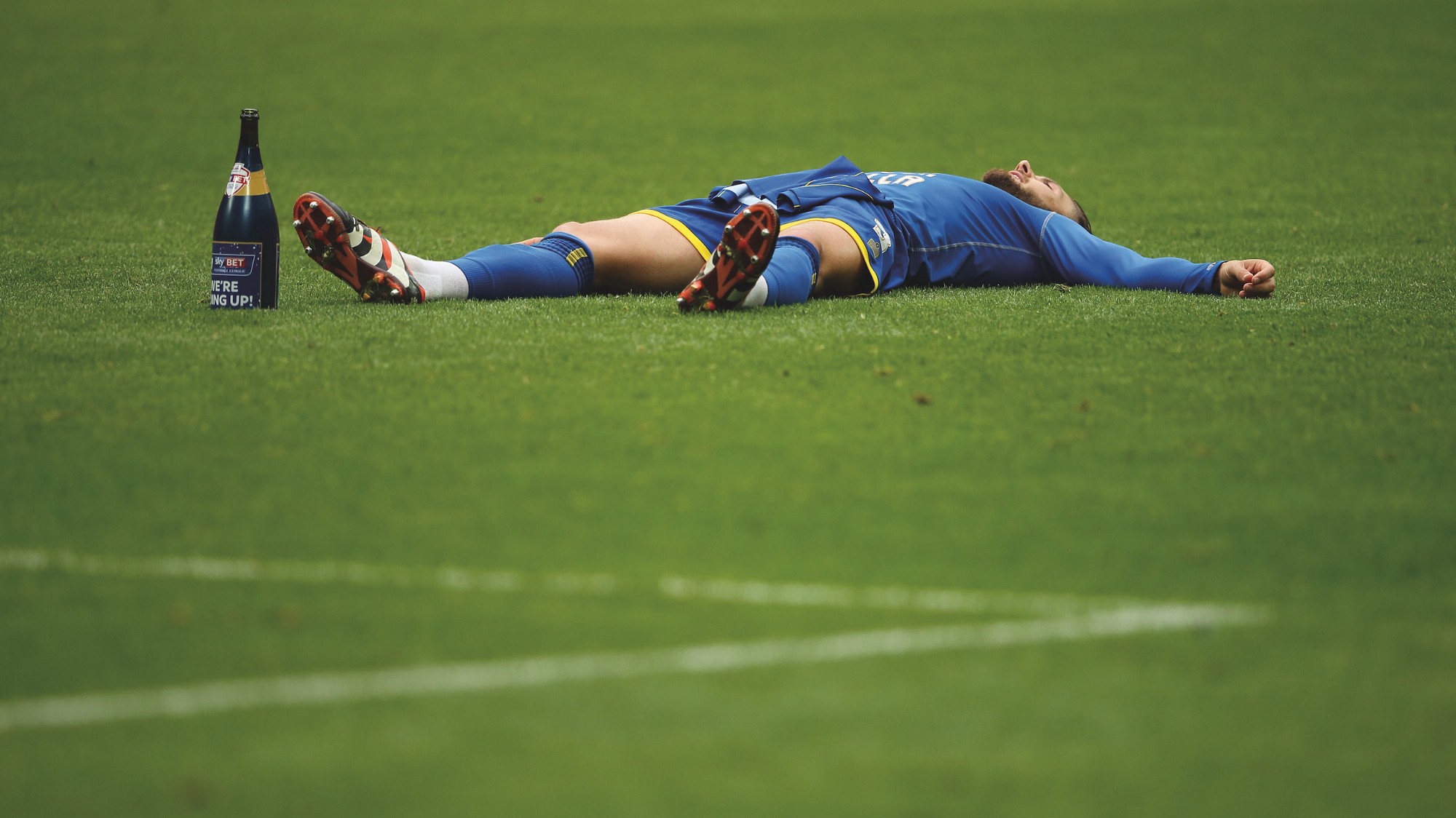
Editor’s note: As a sentient being with a Twitter account, I am aware that no subject stirs up more twaddle and trumpery among the thinking fans of American soccer than that of promotion and relegation. Acknowledged. Understood. But Howler is not Twitter. At its best, this magazine can be a forum for discussing complicated and potentially divisive topics in good faith.
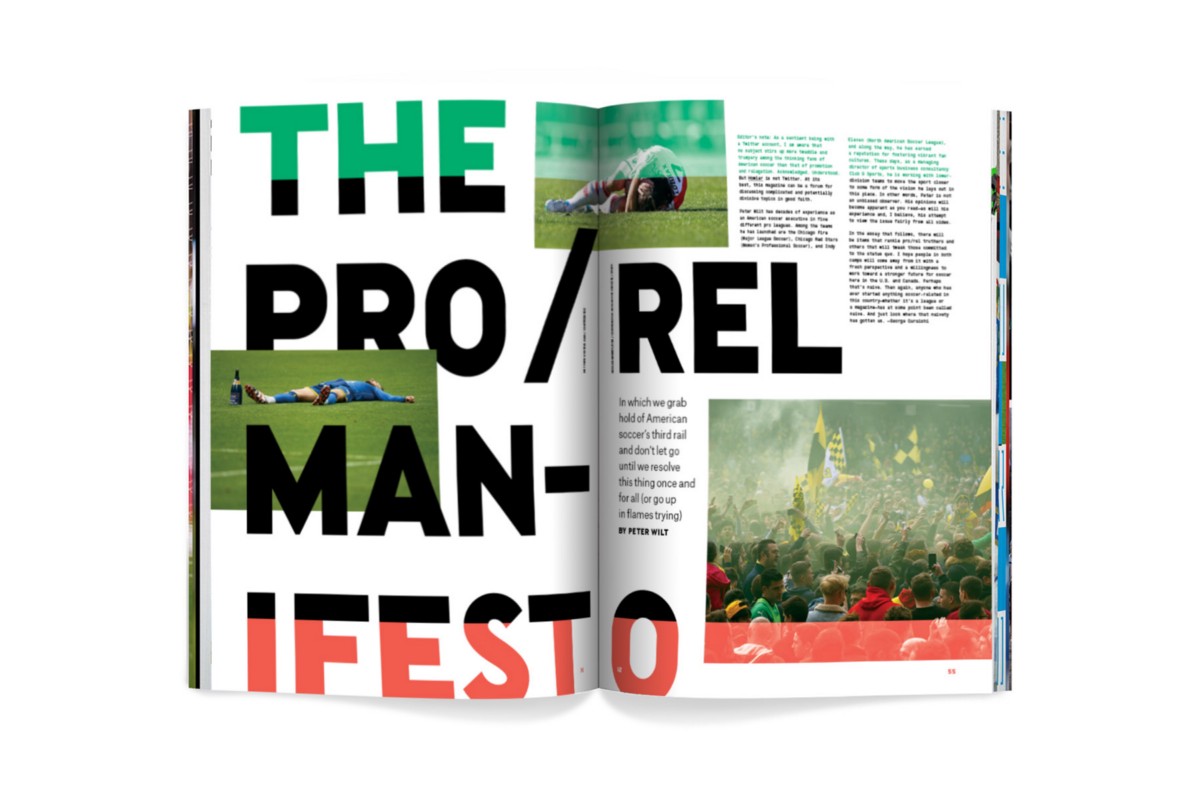
And there are few people more qualified to jumpstart a conversation like this than Peter Wilt. Peter has decades of experience as an American soccer executive in five different pro leagues. Among the teams he has launched are the Chicago Fire (Major League Soccer), Chicago Red Stars (Women’s Professional Soccer), and Indy Eleven (North American Soccer League), and along the way, he has earned a reputation for fostering vibrant fan cultures. These days, as a managing director of sports business consultancy Club 9 Sports, he is working with lower division teams to move the sport closer to some form of the vision he lays out in this piece. In other words, Peter is not an unbiased observer. His opinions will become apparent as you read — as will his experience and, I believe, his attempt to view the issue fairly from all sides.
In the essay that follows, there will be items that rankle pro/rel truthers and
others that will tweak those committed to the status quo. I hope people in both camps will come away from it with a fresh perspective and a willingness to work toward a stronger future for soccer here in the U.S. and Canada. Perhaps that’s naive. Then again, anyone who has ever started anything soccer-related in this country — whether it’s a league or a magazine — has at some point been called naive. — George Quraishi
PS: Peter and I will be checking the comments section of this story and responding to thoughtful posts. Let us know what you think.

For a group of leagues without promotion and relegation, the 2017 soccer season in the United States and Canada is shaping up to be the pro/rel-iest we’ve ever experienced. Minnesota United is moving up from the second to the first division. The Tampa Bay Rowdies and Ottawa Fury are moving from the second division to what was, until January 2017, the third division. For Tampa in particular, a team with several first-division titles from its heyday in the 1970s, this is quite the fall. At least, it would be viewed as such in most other countries. But things are different here. Unlike in England, say, or any of the other dozens of countries where a system of promotion and relegation (pro/rel) dictates which league a team participates in during any given season, the United States and Canada have closed systems. Besides, the entire third was recently promoted to provisional second-division status. Confused yet?
For those unfamiliar, here’s a one-paragraph pro/rel primer, using England as an example. At the end of each season, the worst three teams in the Premier League (the top division) get shunted down into the Championship (the division below). “Shunted” is perhaps not the right word; the Premier League breaks their fall by making sure relegated clubs land softly in massive, Scrooge McDuck–worthy piles of cash, which is paid out of the Premier League’s TV revenue. Meanwhile, three teams from the Championship are promoted to the Premier League, where they’ll stay if they can manage to finish in 17th place or higher. This do-si-do takes place among the best and worst teams in every league from top to bottom of the so-called “football pyramid.”
Why would fans, players, or owners subject themselves to this risk? Isn’t the American model far better? In the last three seasons, the Philadelphia 76ers have finished among the worst three teams in the NBA. If, last year, basketball had been subject to pro/rel, the Sixers would have been replaced by the Sioux Falls Skyforce (the NBA Development League’s most recent champion and an affiliate of the Miami Heat). But this could never happen. When Philly stinks, LeBron still comes to town a couple times a year. In fact, the NBA rewards the Sixers for each season of failure with a prime draft pick.
England’s system is the product of a Victorian-era merger between the Football League and the inferior Football Alliance into a two-division format that allowed the weaker league’s clubs the opportunity to advance via performance — rags to riches, straight out of Dickens. But the people who set up and invested in Major League Soccer believed that replicating the familiar American structures that govern the NBA, NFL, MLB, and NHL would give them the best chance to replicate the success of those leagues — or at least not die off like the many failed American soccer leagues that preceded MLS.
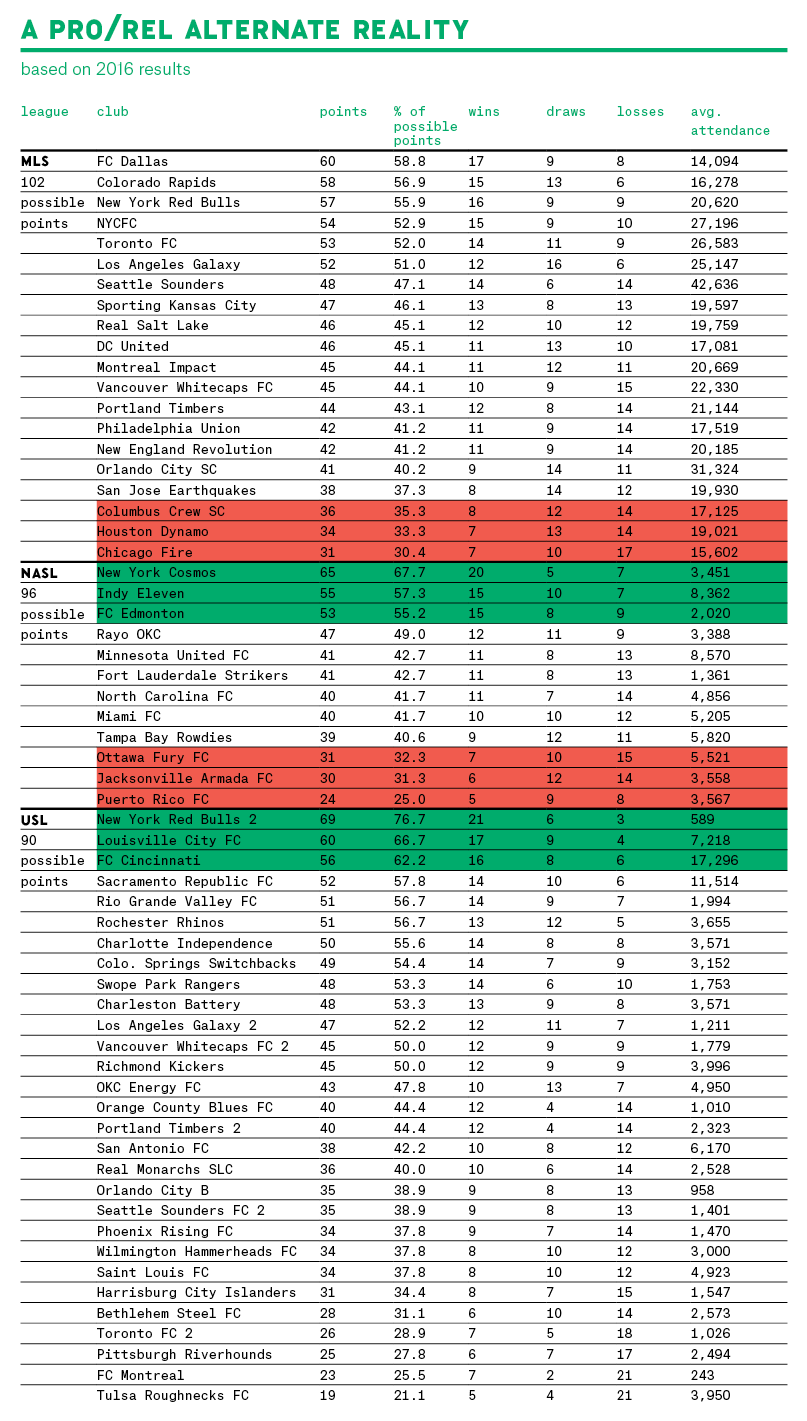
And the strategy has worked. The league is thriving by certain measures such as attendance figures, which are strong relative to many other soccer leagues around the world. There are many reasons to look back on the past two decades and feel proud of what we — everyone working in American soccer — have accomplished. But there’s a lot more work to be done, and if we are serious about developing more talented players, making our professional leagues more competitive, improving the national team, and transforming our national soccer establishment into one that can compete with the best in the world — well, that’s going to require a hard look at our flaws. Under the status quo, we have seen slow and steady growth. Can we improve upon this? I think so.
We’re about to discuss pro/rel, one of the most divisive topics in American soccer. So let’s begin in a place where most people can find agreement. Broadly speaking, I think the two most important goals for what I’ve termed the “American soccer establishment” should be, first, to foster more professional soccer teams in communities across the country, giving more people local teams to root for and providing more young players with opportunities to receive better training from a younger age. Second, our aim should be to improve the level of play at our existing clubs at all levels, from youth soccer to the national team.
No matter how we might try to achieve them, these two items should guide our big, strategic decisions. Achieve these objectives and everything else — higher revenues, greater cultural resonance, World Cup success — will follow. And I believe that MLS has undertaken its slow and steady approach with these goals in mind. However, the slow and steady approach also contains some glaring structural weaknesses that will only become more apparent over time. This is why I will argue that a smart transition to promotion and relegation would help us begin to address many of these weaknesses.
At the root of the conflict between those who champion promotion and relegation and those who dismiss it as impossible, impractical, or unnecessary are the risks of pro/rel to various stakeholders, which are immense. But so are the potential benefits. As an American soccer executive with several decades’ worth of experience in top- and lower-division soccer in the United States, and as someone who is currently working to bring new professional teams to Chicago, California’s Orange County, and other markets, I’ve given plenty of thought to the ways that the various leagues interact and compete with one another. In this story, I’ll attempt to consider the issue in all its complexities. My discussions on behalf of Club 9 Sports with various lower-division league executives and team owners give me hope that some form of authentic pro/rel is possible in this country. There may be little chance that we will see pro/rel in the U.S. for all leagues anytime soon, but it’s worth figuring out how it could work and the steps that would increase its chances of success. Implemented carefully and correctly, such a system could strengthen American soccer on the field and as a collective industry.
First, I’ll examine the potential risks and benefits for each group of stakeholders. Then I’ll propose some ways that pro/rel could be instituted here.

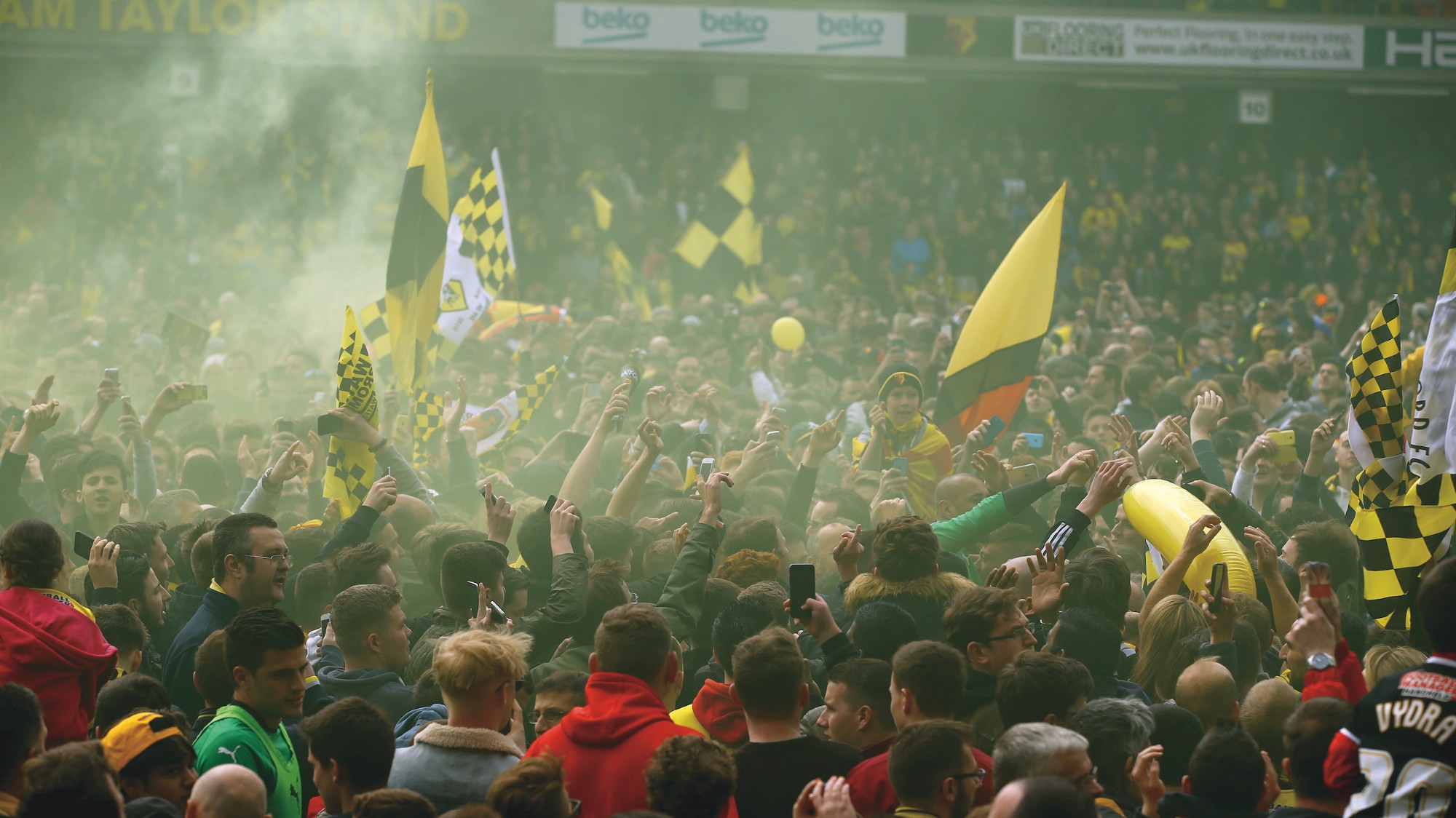
Fans
 PPeople who want pro/rel instinctively think in terms of their favorite lower-division team being promoted to the first division or perhaps of their bitter rival being relegated. But of course the opposite could occur. MLS fans face the real possibility that they could one day find themselves supporting a small-budget club that fields less attractive players.
PPeople who want pro/rel instinctively think in terms of their favorite lower-division team being promoted to the first division or perhaps of their bitter rival being relegated. But of course the opposite could occur. MLS fans face the real possibility that they could one day find themselves supporting a small-budget club that fields less attractive players.
For many fans of MLS teams, the real chance of losing their place in the first division is a major objection to pro/rel. For fans of second-division teams, I think the idea of being relegated to the third division presents much less of a problem. In 2016, the gulf was far wider between our first and second divisions (MLS and the NASL) than it was between our second and third divisions (NASL and the USL), both in terms of quality of play and infrastructure (like stadiums). Therefore, the fans of a second-division team would notice far less of a difference if they were to drop down into the third division than their MLS counterparts dropping down to division two.
 IIn The Miracle of Castel di Sangro, Joe McGinniss chronicled a small club in an Italian town of 6,500 people that climbed from the ninth division (Terza Categoria) all the way to the second division (Serie B). It’s a classic David vs. Goliath story, and it epitomizes the hope inherent in merit-based promotion. Pro/rel is attractive to fans and owners of lower-division clubs because it provides the opportunity for their teams to compete against the very best teams in their country. The odds may be long, but the mere existence of the chance engages fans and keeps them invested in the local club even when it is not playing at the highest level.
IIn The Miracle of Castel di Sangro, Joe McGinniss chronicled a small club in an Italian town of 6,500 people that climbed from the ninth division (Terza Categoria) all the way to the second division (Serie B). It’s a classic David vs. Goliath story, and it epitomizes the hope inherent in merit-based promotion. Pro/rel is attractive to fans and owners of lower-division clubs because it provides the opportunity for their teams to compete against the very best teams in their country. The odds may be long, but the mere existence of the chance engages fans and keeps them invested in the local club even when it is not playing at the highest level.
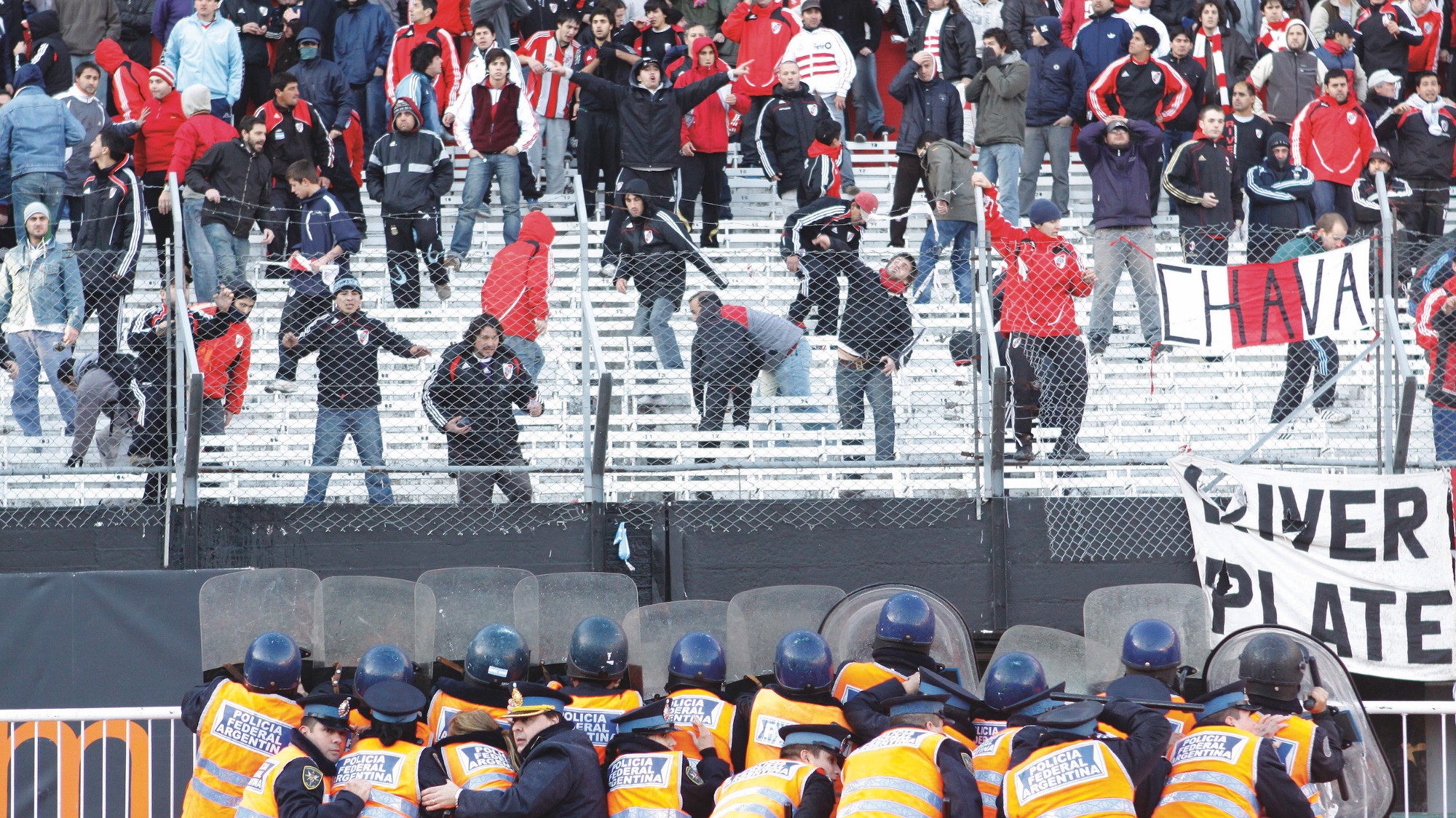
Neutral fans, too, could find lots to like with pro/rel. Because the system connects all clubs regardless of division, fans that formerly had no rooting interest outside of their own club might find that certain matches, even those in other divisions, suddenly matter to them. Take for example the back-to-back matches between the Columbus Crew and Chicago Fire in October 2016. These were the 31st and 32nd (out of 34) regular-season matches between the teams that finished in last and second-to-last place in the Eastern Conference. In other words, both matches were utterly meaningless. “Positive things, you can always find positive things,” said Chicago head coach Veljko Paunovic after Match 31, a 3–0 loss. “What I like about the team is we tried until the end to score at least one goal. We weren’t even close, but at least that’s the mentality we have to look for.” The italics are mine. Try to imagine a coach whose team is about to be relegated saying the same thing: “We weren’t even close to scoring, but let’s look at the positives!” I don’t know why Chicago fans would care at this point, let alone fans of other teams. But I can imagine a scenario in which this two-game stinker at the end of the season suddenly matters, not just to the teams involved but also to the teams around them in the table and even to neutral fans who are much more likely to tune in when two teams are playing for their survival in the top flight. Instead of fans in just Chicago or Columbus taking an interest (and, again, with nothing on the line, I don’t believe they were given a compelling reason to do so), there is the chance that fans all over the U.S. and Canada could care to varying degrees.
Even fans of MLS teams have reasons to support pro/rel in spite of the obvious risk of relegation. For one thing, that very risk would ensure pressure on their team to improve and win even if the prospects of winning a championship that year are bad. That pressure extends from the owner to the coaches, the players, the team staff, and the fans themselves. There’s no question that following a relegation-threatened team can be stressful, but in the fan’s economy of worry and catharsis, the thrill of escaping relegation (or the despondency of being relegated) is not all that different from the excitement of winning a championship (or the letdown of losing one). The opportunity to extend that interest to clubs at the bottom of the table doubles the number of MLS fans who would maintain a passionate rooting interest throughout the season, especially toward the end.

MLS Owners
 OOwners of Major League Soccer teams have by far the most to lose in a new world with pro/rel. Abolishing the closed system would have the greatest potential negative impact on the smallest number of stakeholders, a couple dozen investor/operators of MLS teams who have each spent more than $100 million to purchase and operate their first-division team and did so with the understanding that their teams could not be relegated.
OOwners of Major League Soccer teams have by far the most to lose in a new world with pro/rel. Abolishing the closed system would have the greatest potential negative impact on the smallest number of stakeholders, a couple dozen investor/operators of MLS teams who have each spent more than $100 million to purchase and operate their first-division team and did so with the understanding that their teams could not be relegated.
In 2016, Forbes valued MLS teams between $110 million and $285 million with an average of $185 million, an increase of 80 percent over the average MLS team’s value just three years prior. Much of that increase is due to larger broadcast rights agreements and higher expansion fees. The next round of expansion fees is reported to be $150 million per team, which, of course, is set by the league itself.
Lower-division clubs have considerably less value. Most NASL and USL clubs are worth less than $10 million, and reported expansion fees are about $5 million. These figures — the team values, expansion fees, and operating budgets — bolster my belief that promotion and relegation between the second and third divisions would not make a huge financial difference in the clubs’ operations or valuations.
The impact of a first-division team being relegated would appear to reduce its value by more than 90 percent. Of course, these valuations are based on the status quo of three separate divisions, each a closed system. In an open pro/rel structure, a relegated MLS team would indeed lose value, but not nearly as much as the difference in the current valuations of first- and second-division clubs suggests. The reduction in value would mainly result from the lower quality of play and the reduction in revenue streams, especially the loss of first-division broadcast payouts. However, the relegated team would retain much of its former value because it would still have the opportunity to rejoin the first division in ensuing years. But relegated MLS clubs would also suffer reduced revenues and added financial instability, making it riskier and more difficult to invest in the club to return it to the top flight.

MLS owners would be understandably reluctant to potentially replace large markets with smaller ones, which would negatively impact TV ratings and value to sponsors and thus reduce rights fees and sponsor revenue for MLS and its marketing arm, Soccer United Marketing (SUM). In practice, however, large markets are generally more profitable than smaller ones, and in an open system, market forces would have more bearing on performance. With exceptions, the league structure would likely reach an equilibrium in which larger markets rise to the top and smaller ones settle somewhere below.
MLS owners who have built soccer stadiums count on full houses to help pay the debt service of those venues. Relegation could lead to smaller crowds and lower revenues, making it harder to pay the mortgage. However, the excitement of a relegation battle or push for promotion could also result in attendances that are greater than a team would draw for an otherwise meaningless end-of-season fixture. While there is some risk associated with expensive venues hosting second-division clubs, experience shows that those clubs routinely continue to draw large crowds, and the best-funded and best-managed clubs find their way back to the first division because of the revenues those expensive stadiums generate.
Finally, under pro/rel, MLS owners would lose the ability to choose who else gets to own a team in their league — in effect, the ability to choose their business partners. While the NASL in 2016 saw several teams fall behind on payments to players or cease operations altogether, MLS has managed to remain untainted by such turmoil over its two decades — an admirable record that is due in no small part to the relatively high barrier to entry MLS owners have erected.
The question should not be whether MLS owners would see any benefit to instituting pro/rel — I think it’s clear that there are plenty of competition-based reasons to believe they would — but rather whether the potential positive outcomes are likely to exceed the possible negative impact. The benefits are in two key areas: revenue generation and player development. Let’s consider these in order.
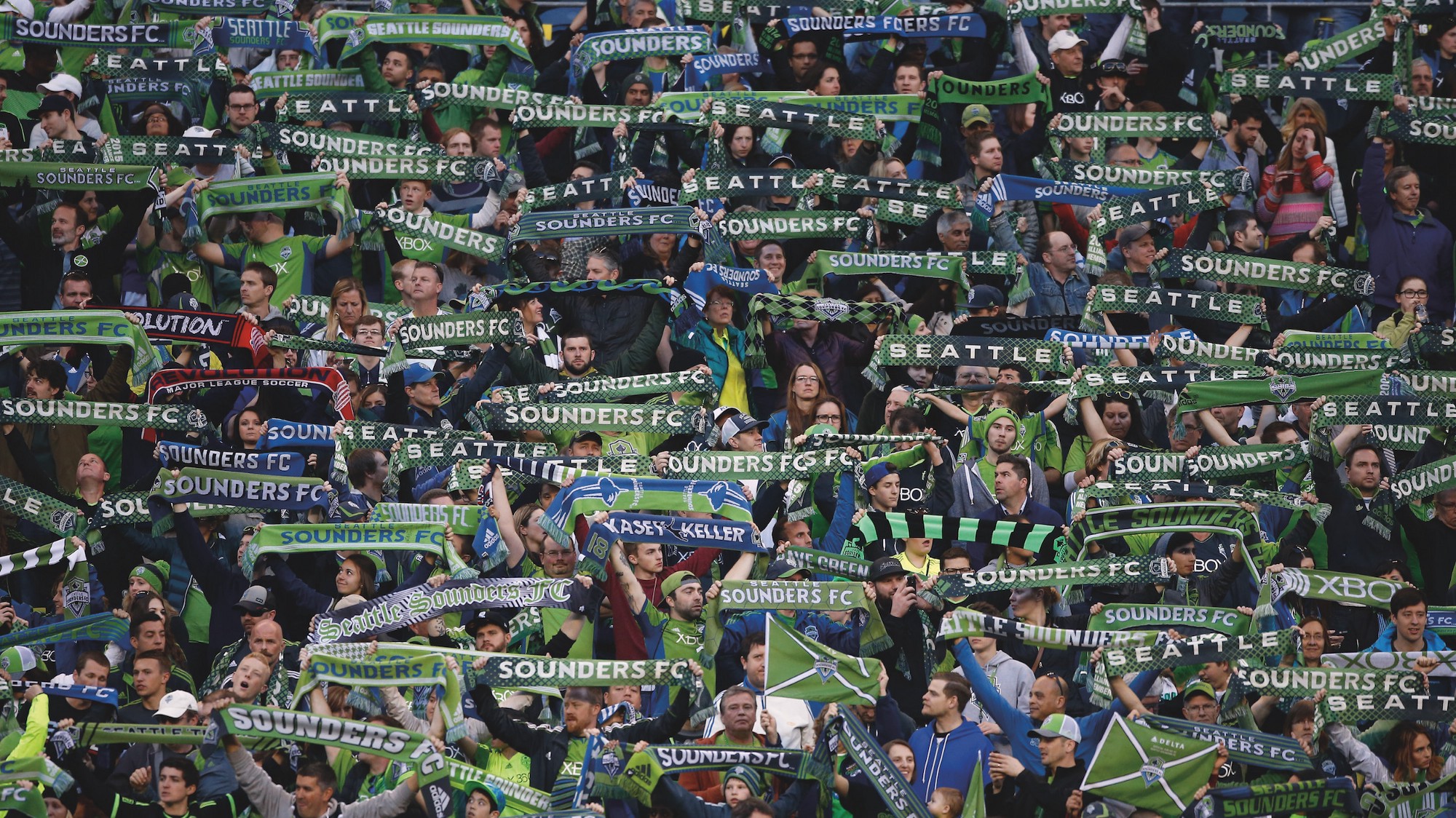
 TThough MLS has made tremendous gains in the last decade, the league is still not reaching its potential. As of 2014, MLS had “well north of $100 million in annual enterprise losses,” according to commissioner Don Garber. Attendance for the eight teams that have competed in the league since its inception is stagnant, with 0.1 percent growth from 1996 to 2015, according to a study by the accounting firm Deloitte. (Because this study was commissioned by an NASL team owner, I have been reluctant to quote it, but I believe this metric should not be controversial.) While attendance for the original clubs is flat, attendance for expansion teams in their first year shows a significant uplift. Seattle’s crowds increased 822 percent in the Sounders’ first MLS season, while Montreal’s went up 98 percent and Portland’s 76 percent. These numbers reflect worldwide trends that show a 20 percent average increase in attendance for promoted EPL clubs and 25 percent for promoted Bundesliga clubs. Meanwhile, the negative impact on attendance for relegated EPL (minus-15 percent) and Bundesliga (minus-19 percent) clubs is less than the gain for the promoted clubs.
TThough MLS has made tremendous gains in the last decade, the league is still not reaching its potential. As of 2014, MLS had “well north of $100 million in annual enterprise losses,” according to commissioner Don Garber. Attendance for the eight teams that have competed in the league since its inception is stagnant, with 0.1 percent growth from 1996 to 2015, according to a study by the accounting firm Deloitte. (Because this study was commissioned by an NASL team owner, I have been reluctant to quote it, but I believe this metric should not be controversial.) While attendance for the original clubs is flat, attendance for expansion teams in their first year shows a significant uplift. Seattle’s crowds increased 822 percent in the Sounders’ first MLS season, while Montreal’s went up 98 percent and Portland’s 76 percent. These numbers reflect worldwide trends that show a 20 percent average increase in attendance for promoted EPL clubs and 25 percent for promoted Bundesliga clubs. Meanwhile, the negative impact on attendance for relegated EPL (minus-15 percent) and Bundesliga (minus-19 percent) clubs is less than the gain for the promoted clubs.
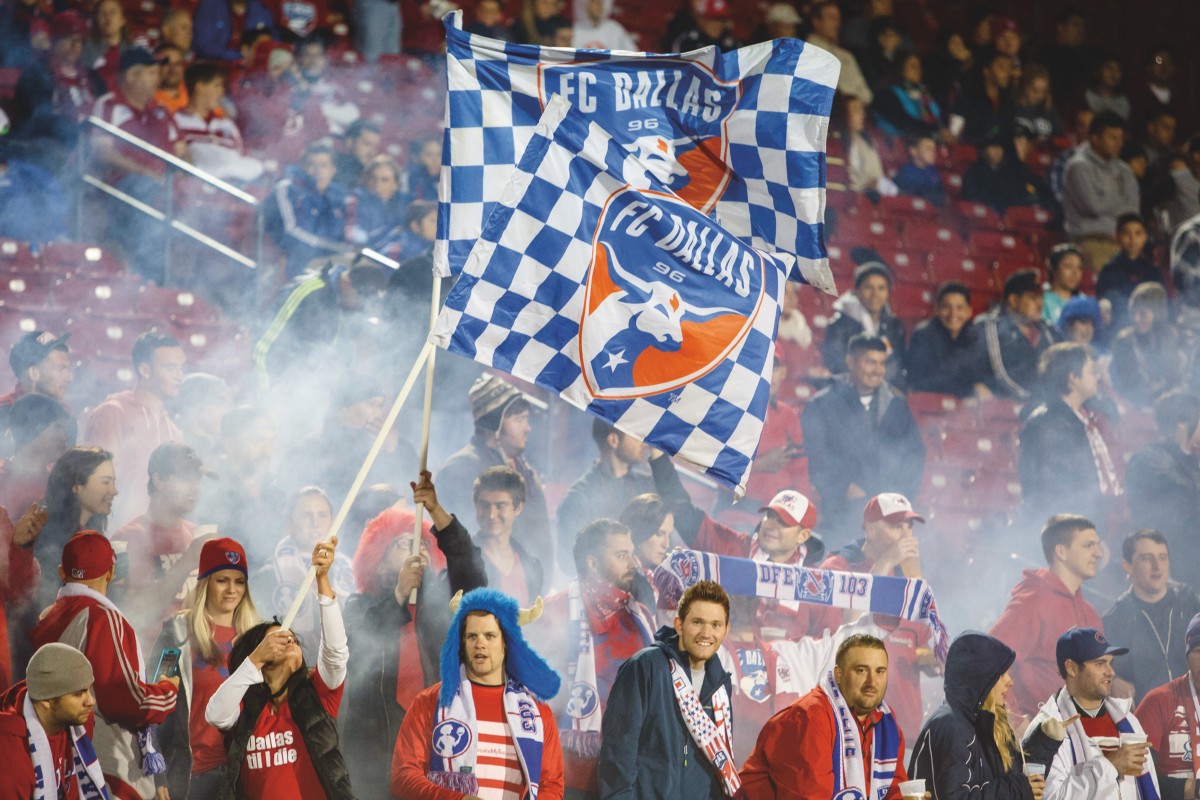
The broad economic benefit of pro/rel is tied into an expansion of MLS’s fan base into formerly neutral markets, increased interest in existing markets, and the opening up of a new pool of investors, both foreign and domestic. Translating this into a dollar figure is difficult, but it would certainly include significant collective increases in every revenue stream, from national and local broadcast rights fees and corporate sponsorships to ticket and merchandise sales and ancillary stadium revenues. The collective increase in team and league revenues would also raise the valuations of MLS teams.
The uptick in fan interest that accompanies the hope for promotion or the dread of relegation would also have a positive business outcome. In MLS’s first decade, a majority of fans attended games much as they would minor league baseball: as a social outing where the result of the match mattered far less than whether or not they had a good time. But over the last decade, the league’s fan base has evolved, and games now attract a lot more people who care deeply about the results. This transition is a huge achievement. It has been fueled by the signing of brand-name players, holding games in urban areas where serious soccer fans live, and a growing demographic of young adults who follow soccer closely.
Under pro/rel, more fans would care about the results of more games (see the Chicago vs. Columbus example above), and the level of interest among fans who already do would also go up; both metrics are critical for sustainability. These more engaged fans will buy tickets and merchandise and watch games on television more often than fans who attend games as a social experience. Again, quantifying this increase is difficult, but it should be self-evident that for MLS owners there is a real economic benefit to a more engaged fan base.
As with its economic benefits, the upside of pro/rel in terms of player development is readily apparent but difficult to quantify. The higher number of meaningful games in every division would heighten the competition among teams for positions in the table and among players for spots in the team. It would put those players in more high-pressure situations and give them more experiences in critical matches. Instead of coasting toward the end of a season once the playoffs have faded out of reach, more matches will matter deeper into the season. If you believe that performance is sharpened through competition, then it follows that more competition will result in individual and collective improvement for coaches and players.
There would also be greater importance placed on performance for all clubs. The opportunity to be promoted and the risk of being relegated would serve as incentive for all clubs to invest more. Teams would be forced to refocus their resources toward player development — specifically, better facilities, scouting, and coaching at youth levels.
The result would be the identification of talented players at a younger age and a bigger emphasis on bringing them together with professionally trained coaches much earlier. These improvements couldn’t help but raise the quality of play throughout MLS, and knock-on effects are likely to include rising attendance and television ratings as well as performance benefits to the U.S. men’s national team — not to mention those to our CONCACAF neighbors, which boosts the region as a whole.

Lower-division owners
 IIronically, lower-division club owners may face a bigger risk with promotion to the first division than they do by being relegated. The increased cost of competing in MLS is much more significant than the potential lost revenue for a second-division club relegated to the third division.
IIronically, lower-division club owners may face a bigger risk with promotion to the first division than they do by being relegated. The increased cost of competing in MLS is much more significant than the potential lost revenue for a second-division club relegated to the third division.
While lower-division fans risk little with the implementation of pro/rel, lower-division owners would take on a huge risk with the potential negative economic impact of promotion. Forbes estimated average MLS team revenue in 2015 to be $30.1 million with operating incomes ranging from a loss of $9 million (New York City FC and Toronto FC) to a profit of $9 million (Seattle Sounders). It is fair to say that any lower-division team would welcome promotion to the first division if it were assured an operational profit, but Forbes estimates that half of MLS teams continue to lose at least $1 million annually and that several lose significantly more. Promoted teams would be required to increase their capital and operational costs significantly, especially in venue improvements and player salaries that would likely be at least double their lower-division payrolls.
The great flux in revenues and expenses along with various facility needs can create fiscal challenges that would make it difficult for many lower-division owners to maintain stability.
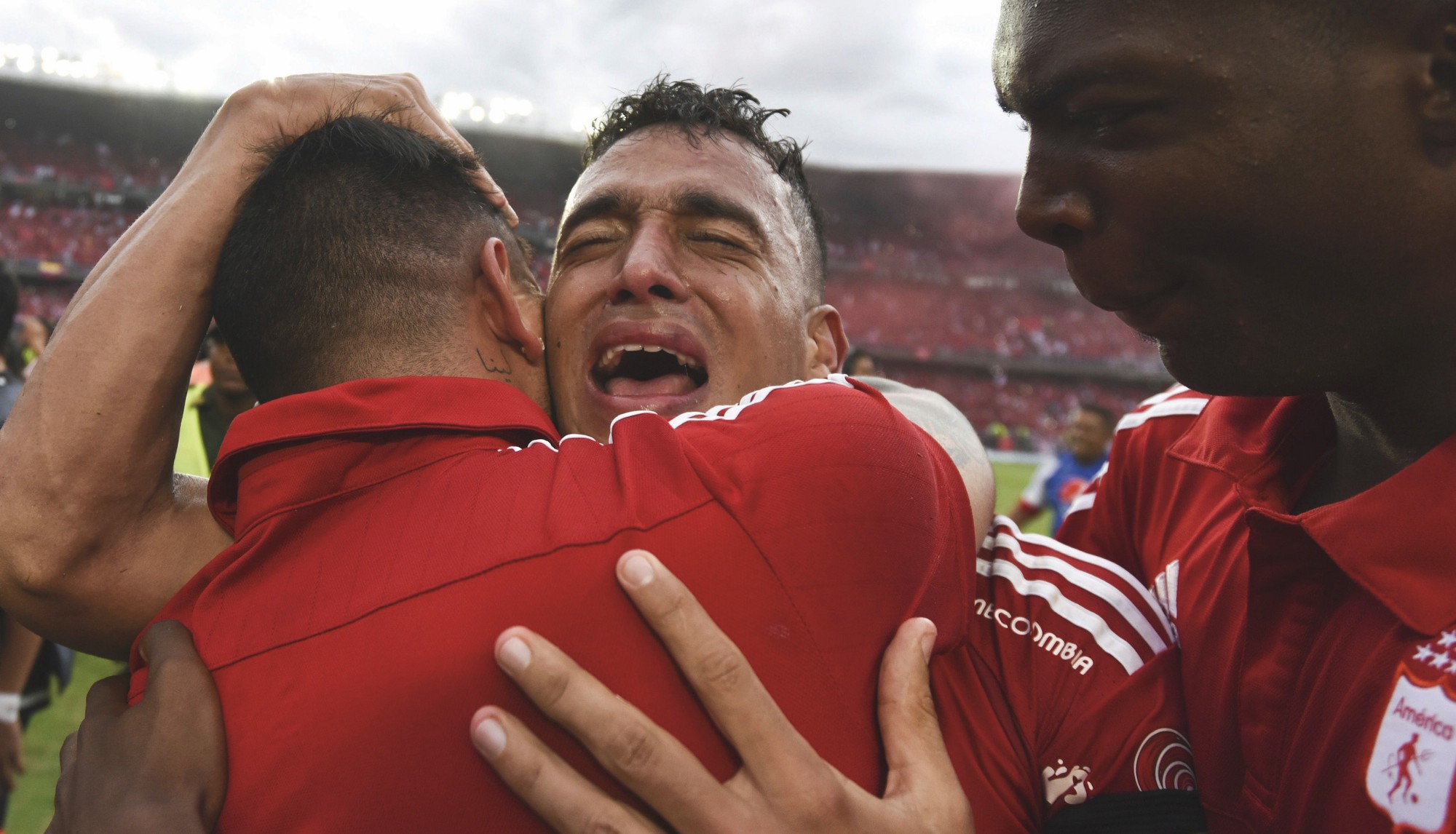
 WWhile pro/rel’s benefit to MLS owners is the most difficult to envision, the enticement to owners of lower-division clubs is the easiest. For the most part, these owners are a group of successful businesspeople with a strong interest in soccer. They are mostly multimillionaires, not the billionaires who make up most of their MLS brethren. Most have invested $5 million to $25 million into teams that likely have market values far less than the amount they’ve capitalized.
WWhile pro/rel’s benefit to MLS owners is the most difficult to envision, the enticement to owners of lower-division clubs is the easiest. For the most part, these owners are a group of successful businesspeople with a strong interest in soccer. They are mostly multimillionaires, not the billionaires who make up most of their MLS brethren. Most have invested $5 million to $25 million into teams that likely have market values far less than the amount they’ve capitalized.
The potential for promotion to a higher league alone would increase the value of the club by creating much greater interest from both foreign and domestic investors. International investment in the lower divisions would be a substantial benefit to owners in all divisions, including MLS. For one thing, there are many more foreign owners and ownership groups with an interest in soccer than exist in the U.S. and Canada. For another, these parties can help strengthen our ties to the rest of the soccer world. All of this is in addition to the obvious benefit of the cash these investors would bring into the North American game.
The promotion of a club to a higher division would significantly increase both the value of the club’s equity and its operational revenues. (We have already addressed the risks associated with this, which are real.) The disparity between the relative equity value of lower-division clubs ($1 million to $10 million) and MLS clubs ($150 million for the next expansion round) is significant. This obviously represents a phenomenal economic opportunity for owners of lower-division clubs and provides a motive for investing in better players, coaching, and training facilities to maximize the chance to earn promotion via performance. That investment would reap both economic and player-development rewards when the clubs are still playing in the lower divisions. Presumably, an improving caliber of play would generate more interest from local fans.

Other stakeholders
 AAsked in 2014 why the U.S. Soccer Federation doesn’t mandate pro/rel, U.S. Soccer president (and Columbia economics professor) Sunil Gulati said, “We’re not in the business of expropriating assets.” A structural change that could reduce MLS team values would imperil the political positions of the people in charge of the USSF and Canadian Soccer Association, who are elected with the support of the first-division team owners. The national federations of the U.S. and Canada would need to manage considerable political upheaval during a transition to pro/rel.
AAsked in 2014 why the U.S. Soccer Federation doesn’t mandate pro/rel, U.S. Soccer president (and Columbia economics professor) Sunil Gulati said, “We’re not in the business of expropriating assets.” A structural change that could reduce MLS team values would imperil the political positions of the people in charge of the USSF and Canadian Soccer Association, who are elected with the support of the first-division team owners. The national federations of the U.S. and Canada would need to manage considerable political upheaval during a transition to pro/rel.
Broadcasters and sponsors would object if larger markets were replaced by smaller ones because diminished ratings and crowd sizes would mean fewer people seeing advertisements, both in person and on TV. This would result in lower return on broadcaster and sponsor investment.
https://www.whatahowler.com/i-got-relegated-8bf27c18da3e
In the 2016 MLS player survey conducted by ESPN, 51 percent of respondents said they were against pro/rel. We don’t have data on the preferences of players in the lower divisions, but my hunch is that pro/rel would have much more support. Players in the U.S. and Canada already face high levels of contractual uncertainty, and those under MLS’s single-entity system have little autonomy relative to their counterparts in other countries. Relegation from the first to the second division would likely add to this uncertainty as clubs look to trim their operational budgets.
College soccer has been the biggest pipeline of young players into MLS. Greater investment in player development by lower-division clubs would siphon more talented young players away from college and toward the new professional development programs. The college soccer establishment would probably suffer from a transition to pro/rel.
 TThe USSF and CSA would benefit from growth in youth soccer participation numbers, an increased commitment to player development by pro clubs, and the improved quality of their respective national teams. The heightened interest in soccer as a spectator sport that pro/rel generates, especially in smaller markets, would lead directly and indirectly to a higher number of kids playing the sport. According to the Deloitte study, youth participation has plateaued at 3.1 million in the last 15 years. The 15-year period before that saw a meteoric rise from 1.2 million to 3 million.
TThe USSF and CSA would benefit from growth in youth soccer participation numbers, an increased commitment to player development by pro clubs, and the improved quality of their respective national teams. The heightened interest in soccer as a spectator sport that pro/rel generates, especially in smaller markets, would lead directly and indirectly to a higher number of kids playing the sport. According to the Deloitte study, youth participation has plateaued at 3.1 million in the last 15 years. The 15-year period before that saw a meteoric rise from 1.2 million to 3 million.
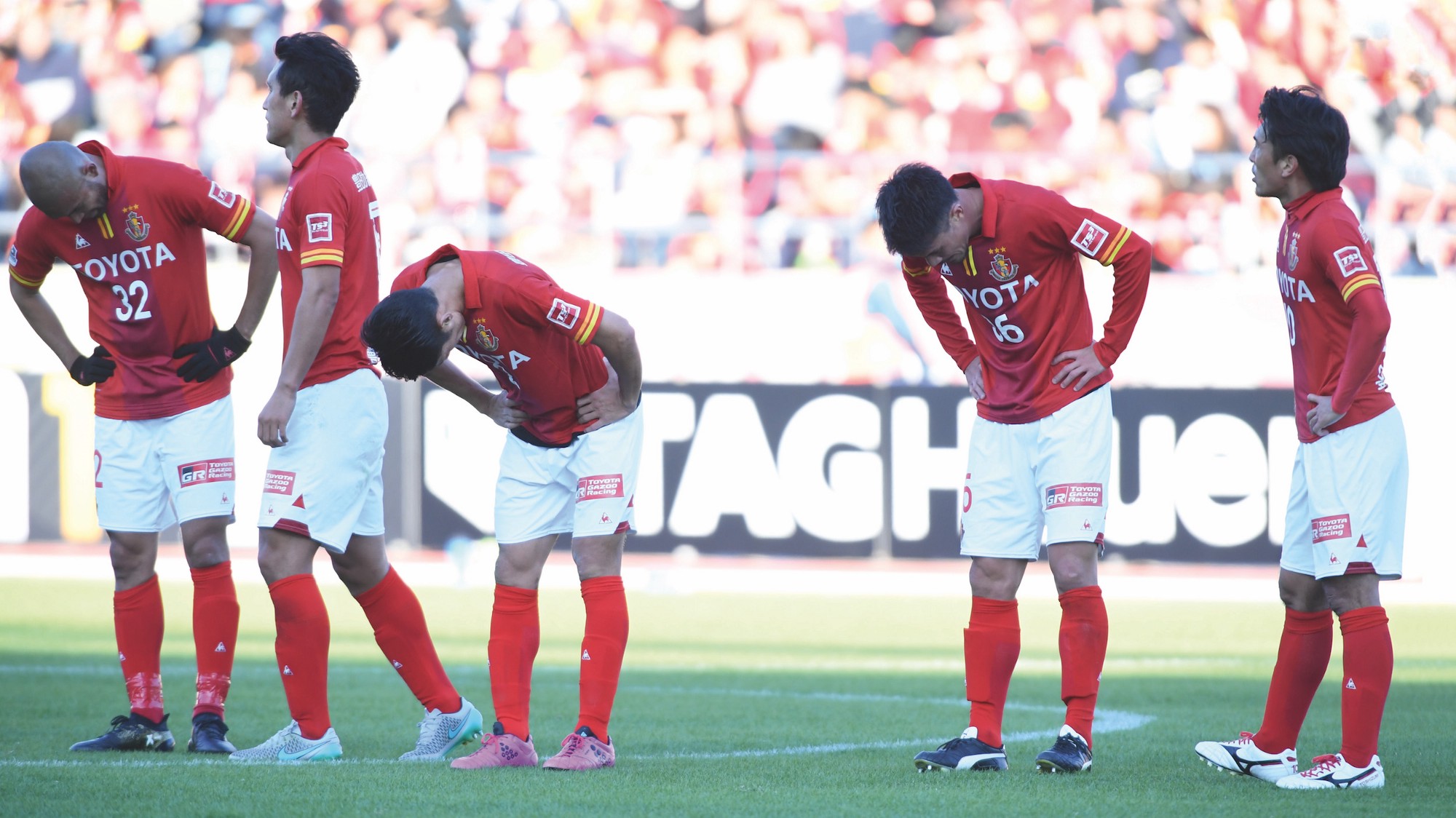
The U.S. and Canadian men’s national teams would benefit from more player-development activity by clubs in both countries. Competition in professional training sessions and games at all levels would be more fierce and more frequent, leading to better players and ultimately to better results for the U.S. and Canadian men’s national teams. This is a thorny topic with many variables, but broadly speaking, it is not unreasonable to suggest that with unrivaled resources and one of the largest pools of youth soccer players in the world, the U.S. should be outperforming its position at №28 in the FIFA world rankings.
The ability to convert social soccer spectators into engaged soccer spectators is critical for broadcasters and sponsors, who would see higher spectator interest in professional soccer in all divisions translate to more eyeballs watching games on television, online, and in person. Engaged fans are much more likely than passive or social spectators to watch soccer games on television or online and to become passionate supporters of the sport’s sponsors. These quantitative and qualitative improvements in pro soccer viewers and spectators would allow broadcasters to charge more for advertising inventory and teams and leagues to charge more for corporate partnership inventory.
At present, lower-division players can only compete in the top flight if they are noticed and signed by a team in the first division. Pro/rel would offer them the ultimate reward for playing well.
Though college soccer as a whole would suffer, the overall quality of American and Canadian players would undoubtedly rise if more of them were able to train in professional environments from a younger age.

Unless you’re one of a handful of the MLS owners who stands most resolutely against changing the status quo, you’re probably at least intrigued by the possibilities of instituting a system of promotion and relegation. If there existed the political will to implement it here, how could we accomplish that? Our goal should be to create structures and strategies that benefit all stakeholders while limiting or even eliminating serious economic risk to those who have the most at stake — to help soccer reach its full potential without harming those who have already invested so heavily in building it. Here are four paths.
1. The Pure Way: Pro/rel mandated by the governing bodies
The simplest, least realistic, and potentially most damaging manner of instituting pro/rel would be for the U.S. and Canadian soccer federations to simply retract their sanctioning of leagues that do not participate in it. Such a move would create a void at the top of the American professional soccer pyramid, and there would be massive political and legal fallout. Practically speaking, this type of unilateral approach would require a highly unlikely change in the leadership of U.S. Soccer and the Canadian Soccer Association or of FIFA, which has a rule about this: “A Club shall qualify for a domestic league championship by remaining in a certain division or by being promoted or relegated to another at the end of a season.” However, the very next line in the FIFA statutes provides an out: “In addition to qualification on sporting merit, a Club’s participation in a domestic league championship may be subject to other criteria within the scope of the licensing procedure, whereby the emphasis is on sporting, infrastructural, administrative, legal and financial considerations.” In short, this path to pro/rel simply isn’t going to happen. Nor do I think it should.
2. The Safe Way: Maintaining a closed system with pro/rel between two divisions
The least risky way to implement pro/rel is to keep expanding Major League Soccer until MLS decides that splitting itself into two divisions has become a logistical necessity. This would allow promotion and relegation, limited to a specific group, to play in either the top-flight “MLS Premier” or second-division “MLS Championship,” and it could be achieved with as few as 28 teams or as many as 40. A system of two leagues of 20 teams each playing a double round-robin schedule of 38 games in total would function similarly to the English Premier League and Championship.
The risks to MLS owners would become diluted, but so would the benefits. There would be more meaningful games for teams in the bottom of the first and top of the second divisions. However, games involving teams in the bottom of the second division would still lack meaning. It does little to engage fans in neutral markets and nothing for those in the dozens of markets left out of this bigger, but ultimately closed, system. By controlling both levels, MLS could allocate broadcast, sponsorship, and other resources to minimize the economic challenges for second-division teams.
Ultimately, this would represent a step in the direction of pro/rel, but it would still fall short of achieving the system’s full promise.
3. The Pragmatic Way: A new league with a new vision
This direction envisions a brand-new, multidivision league assembling more than 100 teams from various sources with pro/rel as the critical element of its structure. The new league could be divided into two or more amateur or semipro levels at the bottom plus two or three professional levels at the top. This could include MLS at the top, if MLS owners concluded it was in their best interest to join (more on that below). The new league would be much stronger with MLS’s involvement, but it could be launched independent of MLS.
The professional level would be populated by teams from several sources. One would be the best-run clubs in the NPSL, a national amateur soccer league that is equivalent to a fourth division and already has nearly 100 teams — such as Detroit City FC, Grand Rapids FC, Chattanooga FC, and others — throughout the United States. These better-funded and better-operated clubs could populate the third and possibly some of the first and second levels.
In December, a half-dozen NASL expansion candidates made presentations to the league. These ownership groups could join the professional levels along with the existing NASL clubs and even some current USL clubs looking for a different structure. Based on inquiries I’ve received from potential outside investors and current NPSL owners, I am confident that a critical mass of new professional teams could be added over the next several years if this structure were implemented.
The pro/rel aspect would not begin for several years, until the top two (or three) levels are fully populated at 20 teams each. Once populated, the pro/rel system would be implemented.
There are two critical components that would need to be included for this plan to work. First, the new league would need to work with experienced advisers who would help staffs of lower-division and new clubs improve their operations via best practices.
Second, the new league would need to work closely with an experienced investment bank to raise capital. The funding would be needed for both existing clubs with ambition to grow and new clubs that would like to buy their way into the highest two divisions before the 20 slots per level are populated.
Absent MLS, this direction could easily include an element of fan ownership by mandating or encouraging the formation of supporters trusts — a way of doubling down on fan engagement and helping promote the structure’s success.
A supporters trust is a formal, democratic, and not-for-profit organization of fans who work with the clubs they support to make them better. As part of the restructuring of the three leagues, I would recommend mandating that all teams that are in states allowing crowdfunded equity allow for the creation of supporters trusts. This would enable fans to become minority owners and secure board representation. In the Bundesliga, a minimum of 51 percent of each club must be owned by its members. In England, there are 110 supporters trusts that own shares of their clubs. I would suggest that the initial percentage can be as little as 10 percent and the representation can vary. Until recently, U.S. securities regulations forbade crowdfunding public investment in for-profit entities. However, the federal JOBS Act of 2012 is now spawning state-level crowdfunding legislation throughout the country that permits exactly this sort of model. The additional capital could be used to assist promoted clubs as they adjust to new leagues. In addition to raising capital for clubs — which would be significant for teams on the smaller end of the spectrum — the relationships between supporters trusts and club owners increase personal connections, passion, and support between fans and their clubs.
In addition to having supporters involved in the management of the clubs, the new league should reserve a position on its board of directors for a supporters trust or supporters group representative. The rep could be elected annually by the chairs of all the club supporters trusts or supporters groups. This would give the league and owners greater insight into the needs and views of the fans and vice versa.
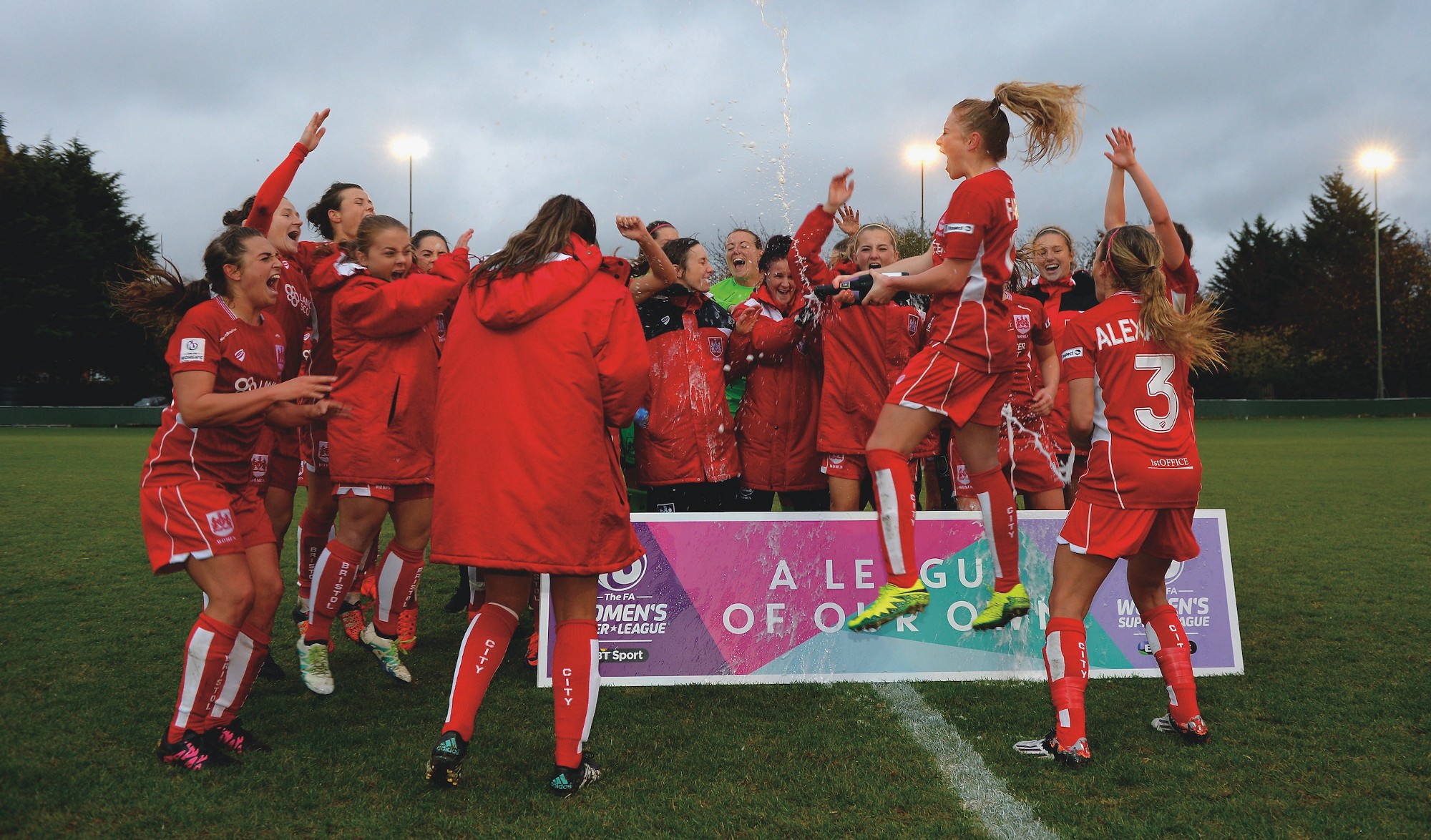
4. The Best Way: Pro/rel with MLS at the top of the pyramid
If MLS owners were to decide that transitioning to pro/rel was in their interest and could be persuaded to pursue a broader vision than the one I outline in Option 2, then Option 3 could easily be adapted to include them. In fact, I believe this would be the ideal scenario and the one with the best chance of success. As I’ve noted, the economic risk to MLS investor/operators is the greatest challenge to securing their participation. To buy into a new system, those owners will need to see the potential for massive growth at the top end and reasonable protections against financial instability at the bottom, and the transition would have to take effect without allowing them to extract concessions that would dilute the pro/rel structure beyond usefulness. To achieve this, I propose seven measures that could be implemented in varying degrees.
I. Bring the top three divisions under one umbrella
Increasing the connections among the three leagues is imperative for a sustainable pro/rel structure. The current ownership structures of the three leagues are unique, making common interest difficult. The USL is owned by a private limited liability corporation controlled by two individuals, Rob Hoskins and Alec Papadakis. The USL sells franchises that operate in given territories. The NASL operates as a group of independent club owners. Each club is a shareholder in the league. And MLS is structured as a single entity, meaning MLS investors purchase a financial stake in the league, which grants them the right to operate a team.
Structuring pro/rel so that the various leagues benefit from each other’s success may necessitate corporate restructuring that aligns each group to more readily share a common interest.
The top tier has the greatest resources and the greatest ability to unite the 60-plus clubs’ interests by investing throughout the lower divisions. MLS teams currently own 12 of the 41 lower-division teams and have affiliations with nine others. While MLS’s single-entity structure has led to significant fan criticism and skepticism, it has also helped the league maintain stability and cost certainty and allowed MLS to achieve consistent financial growth over two decades.
Extending the single-entity structure through the lower divisions would create stability and sustainability for all three tiers of soccer in the U.S. and Canada. The merger would bring more significant properties under the MLS umbrella, aligning the economic interests of all three divisions and expanding inventory for SUM to monetize. This would require lower-division owners to restructure and sell or trade, in some fashion, equity in their clubs and league to MLS, which could be done in a way that guarantees the current lower-division club owners their exclusive rights to operate the teams in their markets just as they currently do. In exchange for the benefits of participating in pro/rel, lower-division clubs would receive parachute and solidarity payments (more on that below), and they would provide commercial assets such as league sponsorship and broadcast rights to MLS and SUM.
Lower-division salary budgets, player contracts, and pay would become centralized as they currently are in MLS. Players in lower-division leagues would likely join the MLS Players Union and negotiate a collective bargaining agreement that would standardize team salary caps, minimum player salaries, and other labor terms. Expanding the single-entity structure to lower divisions and consolidating under MLS may be difficult for many to accept, but it would provide a very good chance to stabilize the sport and allow a smooth transition to pro/rel.
Not including MLS would simplify this element significantly but would also reduce the attractiveness significantly by taking away the top division.
II. Parachute payments for relegated clubs
In England and other countries, relegated teams receive payments to ease the financial transition to a lower division and improve the potential for a quick bounce-back. These payments come from revenues generated by the top division’s broadcast fees and are supplemented with additional annual “solidarity” payments shared with all other lower-division clubs.
Currently, the parachute payment in England is equal to a single club’s share of broadcast revenue paid to a Premier League club but is spread out over two seasons. There is an additional 20 percent share paid in year three if the club was in the Premier League for more than a single season.
Parachutes benefit the relegated clubs, but they also make it more difficult for existing lower-division clubs to compete, sometimes resulting in a rotation of the same clubs into the first division. The financial rewards of being promoted (even if only for a single season) can have the effect of incentivizing existing lower-division clubs to spend more to compete, but salary caps can be instituted to minimize this risk.
MLS is still a maturing broadcast property whose current TV deals are worth a reported $90 million annually, a 500 percent increase over the previous agreement. If the new league were to institute this policy with similar ratios, it would provide relegated teams approximately $2 million per team spread over two years plus a possible year-three payment of $400,000. Assuming another 500 percent increase when MLS negotiates its next round of rights fees in 2023, relegated teams could take in parachute payments of more than $10 million per year for two seasons plus $2 million in year three. That would go a long way toward alleviating financial concerns about being relegated from MLS. Parachute payments, as well as the solidarity payments and the promotion fees described in the next two elements, could be included with lesser amounts in a pro/rel structure that does not include MLS.
III. Solidarity payments to lower-division clubs
In addition to parachute payments to relegated teams, I recommend providing annual “solidarity” payments to all lower-division clubs. Currently, clubs in England’s second tier each get about $2 million annually. Clubs in the next two tiers each receive approximately $600,000 and $400,000 respectively. These figures are tied to revenue from EPL broadcast rights. A similar percentage of the MLS broadcast deals would result in solidarity payments of less than $100,000 annually for second-division clubs and $25,000 for third-division clubs.
However, instead of tying the solidarity payments to broadcast fees, I recommend creating a solidarity endowment fund utilizing as-yet unpaid expansion fees. Minnesota paid a reported $100 million, and MLS president Mark Abbott has said that subsequent rounds of expansion could fetch fees of $200 million. MLS has announced its plans to grow to at least 28 teams; I’d be surprised if it didn’t eventually grow to 32. This would mean that the final eight teams could generate a minimum of $1.6 billion in expansion fees and likely exceed $2 billion. If MLS were to allocate $400 million of this amount to a 20-year solidarity fund endowment, it could support clubs in the two lower divisions much as the EPL does for England’s lower-division clubs. At 3 percent interest, the fund would generate $600 million over 20 years that could be distributed all or in part to lower-division clubs to maintain stability and hedge against the variance of reduced revenues for long-term relegated clubs. Planning for a capacity of a fourth division at some point in the next 20 years would be wise, bringing the total number of professional clubs to 80 in four divisions of 20 teams each. Even assuming that the increase to 60 lower division clubs would occur in year one, that endowment would provide an average of $500,000 per year per club, with more for second-division clubs and less for third- and fourth-division clubs.
There are plenty of variables; the general concept is one in which clubs are working together to assure long-term sustainability and growth.
IV. First-division promotion fee
To ensure quality ownership for first-division clubs, I recommend a significant annual “promotion fee” to be charged for the first decade a lower-division club plays in the first division. It could be anywhere from $5 million to $10 million per year. These monies would be added to the expansion fund. It is also a way for newer first-division owners to acknowledge and contribute to the considerable investment already made by MLS owners.
This sizable fee would be a hardship for many lower division owners, but it would incentivize them to add investors to shore up their club’s financial foundation upon promotion to the first division.
V. Tie salary cap to revenues
I recommend linking team salary caps in all divisions to league revenues from the previous season, a concept that is similar to the NBA’s soft cap negotiated into that league’s collective bargaining agreement. Tying revenues and labor costs will align the interests of players and management and provide both parties with a positive sense of partnership as the overall business improves. It will also limit labor cost exposure for management if revenues don’t increase at the projected rate.
VI. Minimum standards for promoted clubs
An important concern for MLS and lower-division club owners alike will be the ability of promoted clubs to meet minimum first-division standards on and off the field. Infrastructure standards, such as stadium capacity and amenities, should be governed with a firm and reasonable approach that would incentivize more clubs to upgrade facilities. Many of the lower-division owners could not currently operate in MLS, but if they had the opportunity to join, they would find partners to make it happen or sell outright to owners who could afford the higher level of investment; a much overlooked fact in the pro/rel discussion is that this structure will attract investors who have until now chosen not to invest in a soccer club. Options to permit teams to confer their promotion to a runner-up club due to economic or facility constraints may also be considered. While minimum standards would also be a concern for a pro/rel structure that does not include MLS, the standard gap would not be as great without the top division.
VII. Scheduling and pro/rel mechanics
A variety of scheduling, playoff, and pro/rel specifics could be utilized to maximize the interest in pro/rel and to minimize negative effects. In his series exploring pro/rel last year for Fusion, Steve Davis proposed a limited crossover schedule between clubs in the first and second divisions, which would allow fans in those markets to see opponents’ star players and teams to maintain rivalries.

The vagaries of pro/rel could result in unbalanced regional loads for various divisions, which would impact travel expenses and rivalries. Creating dual regional pyramids solves this issue but creates other problems, such as limitations on fans in one region getting to see teams from other areas of the country. However, scheduling a number of games against geographic rivals one level higher and/or lower until the two pro levels are filled with 20 teams each would serve to minimize travel costs for division two and three teams.
Davis also had two recommendations to reduce the likelihood any team would spend too many years in a lower division. First, he would have more teams in the first division (20) than the second division (10). He also suggested promoting and relegating a greater number of teams (four or five) each year than the traditional two or three.
There are also lessons from Liga MX and other Latin American leagues that should be taken into account. To minimize the chance of a big club being demoted, Argentina in 1983 instituted a system by which clubs were relegated from the first division based on a three-year cumulative record. This method was instituted by Liga MX in 2012, but in Mexico only one club is promoted and relegated per year. Many second divisions around the world, including England’s Championship and Mexico’s Ascenso MX, use a playoff system that adds excitement to the annual promotion battle. In some countries, a playoff between the teams that are slated to swap divisions gives a club that is on the brink of relegation one final chance to stay up.

This piece has addressed the pros and cons of implementing pro/rel. It does not address the consequences of deferring or avoiding pro/rel altogether. Maintaining the status quo has its own implications — positive and negative — for domestic soccer. Projecting American pro soccer’s trajectory while maintaining the current closed system is likely more accurate than predicting all the unknowns that come with implementation of a new structure.
Keeping a closed system would likely mean more of the same: slow, managed growth in MLS with the expectation, or hope, that at some point media revenues grow to justify competitive bidding for the best players in the world. Lower-division clubs will continue to have starts and stops as some establish roots and relevance in their communities and others fail and fade away.
There is no doubt pro/rel would increase the value of all lower-division clubs. Given the opportunity to attain first-division status, lower-division clubs would be incentivized to invest more in their own infrastructure and in player-development programs. They would become more attractive to outside investors, and individually, the clubs would increase in value by tens of millions of dollars. Cumulatively, the positive impact could be in the billions of dollars for lower-division clubs and the sport of soccer. And, if done right, that increase should not come at the expense of MLS, U.S. Soccer, or the Canadian Soccer Association. Indeed, if implemented well, MLS’s value would also likely grow, and the governing bodies would see many benefits as well.
There are several ways to implement the pro/rel system that would minimize the economic risks to MLS investors. And there are many ways to divert existing revenue streams and mine new ones to mitigate the economic risk. Like any great transformative project, making it happen will require courage, vision, and honesty. But the potential windfall — in economic growth, fan interest, and player development — is so massive that all stakeholders in the sport must take the issue seriously, explore solutions, and refrain from dismissing it as a topic for a future generation.

